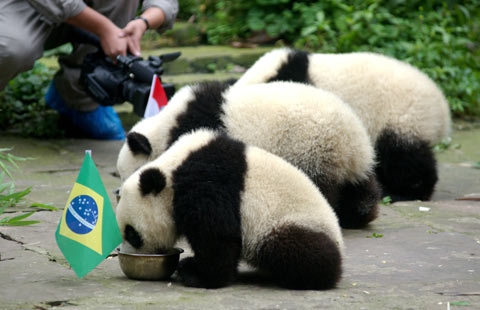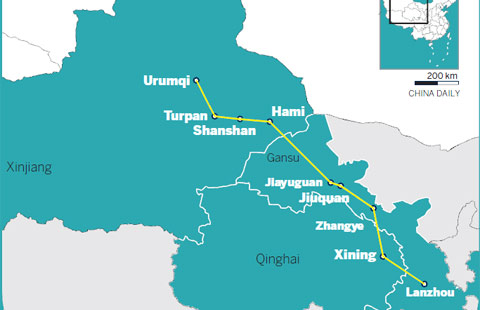Backgrounder: All about the giant panda
(Xinhua) Updated: 2014-02-22 09:01How to get a panda legally
By 1982, 24 Chinese giant pandas had been presented to nine countries including the former Soviet Union, the Democratic People's Republic of Korea (DPRK), the United States, Japan, France, Britain, Mexico, Spain and the Federal Republic of Germany.
Donations to other countries stopped in the 1980s. The only way to get a panda now is by leasing one, or through research cooperation.
Currently, 43 guest pandas, including their foreign-born cubs, live in 17 zoos in 12 countries who have established research cooperation with China. Among these, 41 belong to China. Mexican pair are descendants of those donated in the 1980s.
When choosing pandas to go on missions abroad, a pair of hometown friends are usually chosen. Although it is an "arranged marriage", it helps breeding research. In Zhang Hemin's words, "do not waste giant pandas' youth."
If a foreign country wants a giant panda, step one is submitting an application, but not all applications are accepted. Climate, facilities, technology and potential panda habitat are taken into consideration. The preparations often take over a year.
Zhong Yi, in charge of international cooperation at the China Wildlife Conservation Association, said 10 year leases were the norm and all giant pandas, including babies born overseas, belong to China. Even cast hairs, blood samples, etc. should be sent back, according to the convention.
The international missions of giant pandas have benefited the world's biodiversity and wildlife protection. During the process, China shared its breeding technologies with cooperating foreign countries. Those countries made reciprocal contributions to the protection of giant pandas and their natural habitat in China.
- More female officials caught in corruption
- Whampoa veterans recorded with glory
- Police bust 9 terrorist groups in Xinjiang
- Knife-wielding attackers seized in Xinjiang
- New regulation leads to drop in petitioned cases
- Hunan plant shut as probe into lead poisoning begins
- Police boost efforts to combat gambling
- Project offers jobs openings to legal experts
- Experts: Dog meat festival 'illegal'
- Nation looks to upgrade
pipeline networks






